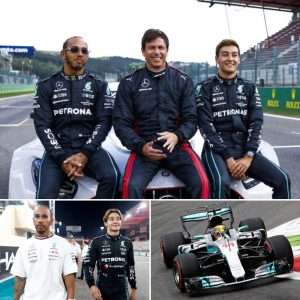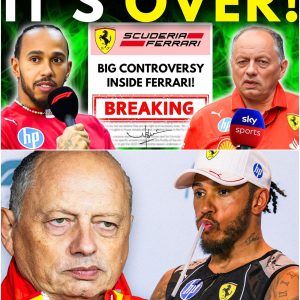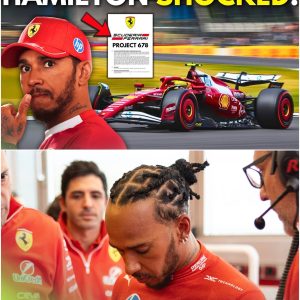Picture Maranello. The factory glows under red floodlights, a pressure cooker where dreams are forged and reputations collapse. Mechanics file out in silence, data engineers argue in hushed tones, and the ghost of Ferrari’s past glory lingers above every workstation. The SF-25 was supposed to be a weapon, the culmination of Ferrari’s 2024 title challenge. Instead, it’s a paradox: fast enough for podiums, never sharp enough for victory.
Ferrari sits second in the Constructors’ standings with 286 points, a distant 112 behind McLaren’s rampant 398. Charles Leclerc has carried the team with five podiums, while newcomer Lewis Hamilton is marooned in fifth, winless and 133 points adrift of Oscar Piastri. For a seven-time world champion with 104 career wins, the drought is suffocating.
And yet—amidst the heartbreak, Ferrari boss Fred Vasseur doubles down. His target? P2 in the Constructors’ Championship and at least one race win, even if it means sacrificing resources for the 2026 regulation reset. A gamble that divides fans, pundits, and perhaps even the drivers themselves.
This is the cinematic saga of Ferrari’s 2025 Formula 1 season.

The Lofty Goals of Fred Vasseur
Fred Vasseur is not one for half measures. Fresh off a contract extension reported by Sky Sports, he declared Ferrari’s intentions bluntly to F1.com:
“We want second in the championship, and we want wins. That’s the standard for Ferrari.”
The problem? Chasing that standard has required pulling wind tunnel and CFD time away from the 2026 project—a project that will define Formula 1’s next era, with its 50% electric engines and radically different aerodynamics.
Experts are torn. Martin Brundle cautioned on Sky Sports:
“Ferrari’s playing with fire. 2026 is their real shot. But they’re betting prestige in 2025 will buy them time.”
Karun Chandhok, however, took a softer stance in Autosport:
“If Hamilton’s experience can be baked into the DNA of the 2026 car, this short-term pain may be worth it.”
The tension is clear: Ferrari is gambling its future on salvaging pride in the present.
Hamilton’s Nightmare Transition
Hamilton’s arrival in Maranello was supposed to be a fairytale. The seven-time champion leaving Mercedes, where he wrote history, for one final challenge in red. Instead, it’s been a nightmare of missed podiums and technical gremlins.
The biggest culprit? Engine braking.
The SF-25’s braking migration system—essentially how the car balances energy recovery and braking force—has been described by Hamilton as “alien”. On Sky Sports, he admitted:
“We’ve sacrificed some outright pace for stability, but the braking feel isn’t where I need it. We’re building, but it takes time.”
Ironically, his former teammate-turned-rival Carlos Sainz—now at Williams—backed Hamilton’s complaints. In media scrums quoted by Motorsport.com, Sainz revealed:
“Ferrari’s engine braking is totally different. It changes your driving style. You need months to adapt. At Williams, going back to Mercedes power feels almost reversed.”
That validation hit fans like a jolt of electricity. If both Hamilton and Sainz struggled with Ferrari’s braking DNA, maybe the problem isn’t the driver—it’s the car.
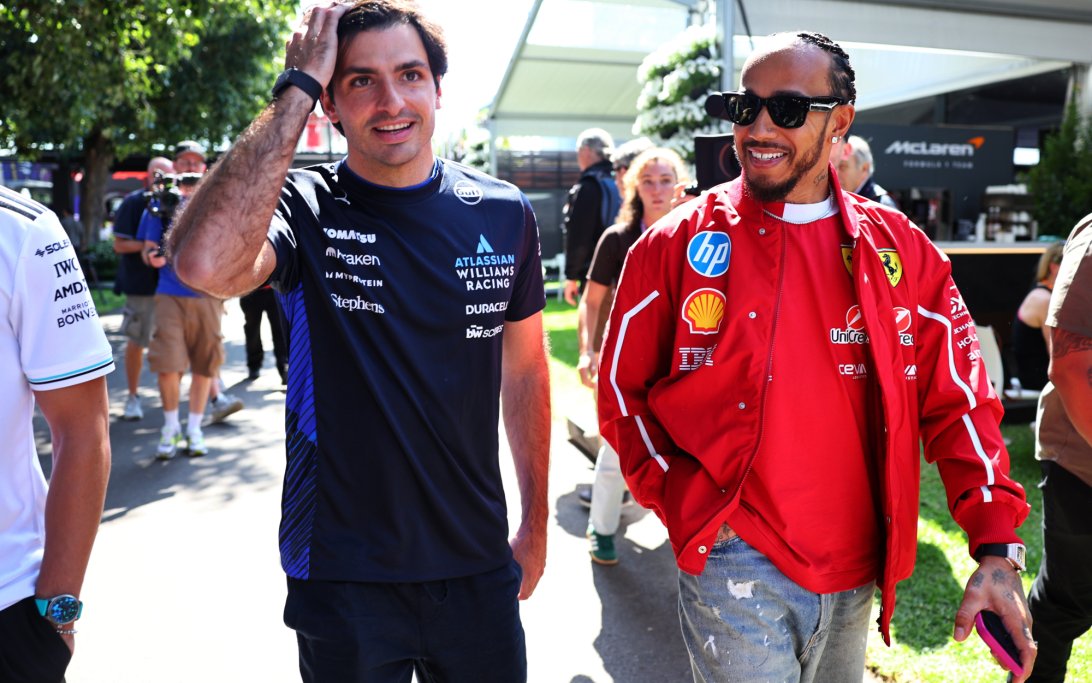
The Hidden Demons of the SF-25
On paper, Ferrari’s SF-25 looked like an evolution. More efficient aerodynamics, a sleeker sidepod design, and a focus on maximizing tire life. But beneath the red paint lurked hidden demons.
The car has pace—Leclerc’s podiums prove that—but it lacks the decisive edge to fight McLaren’s MCL39, which has been a revelation.
Where Ferrari falters:
Engine Braking Transition: The awkward balance between harvesting energy and driver feel.
Tire Windows: The SF-25 struggles to switch its tires on quickly, especially in cooler conditions.
Straight-Line Speed: Despite aero tweaks, Ferrari still loses chunks of time on long straights, leaving them vulnerable in battles.
As The Race noted, Ferrari “overhauled aero for gains that never fully materialized.” In other words: they fixed the wrong problem.
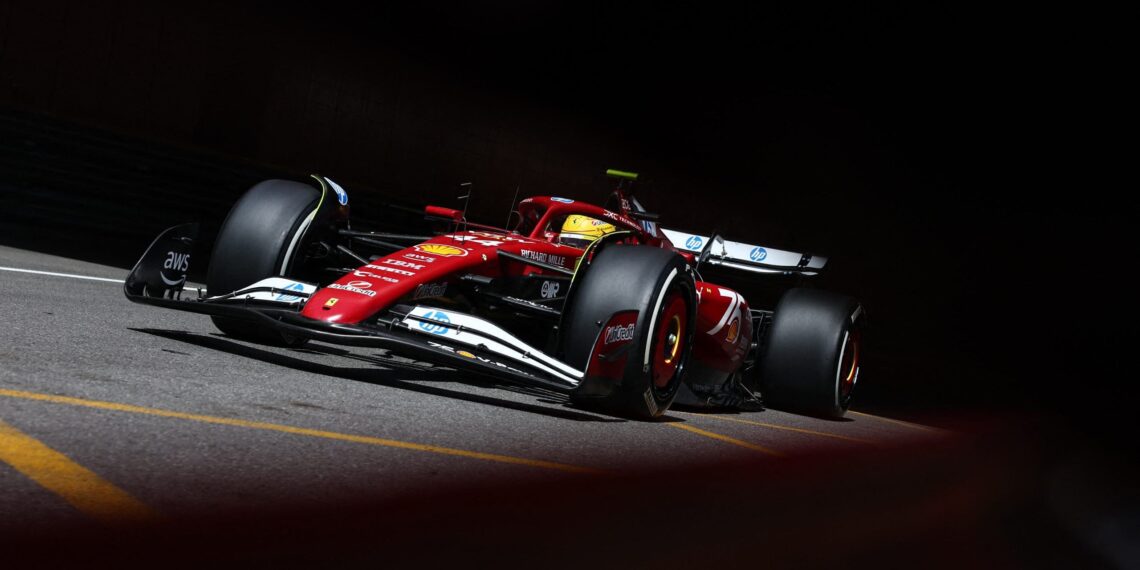
Leclerc: The Lone Bright Spot
If there’s a silver lining, it’s Charles Leclerc. The Monegasque has shouldered Ferrari’s season with relentless consistency. His five podiums are the only thing keeping Ferrari from being swallowed by Red Bull in the standings.
Leclerc, speaking to Sky Sports, defended the team’s direction:
“Second place matters. Ferrari must always fight for wins, and if it costs us some time in 2026, it’s worth it.”
His words echo Vasseur’s mantra. But even Leclerc admits privately that McLaren’s dominance—Oscar Piastri and Lando Norris trading wins—feels unassailable.
McLaren’s Shadow and the Fan Meltdown
Ferrari’s heartbreak is magnified by McLaren’s rise. Piastri’s 226 points and Norris’s relentless speed have given Woking its best title challenge in two decades.
On social media, Ferrari fans have split into camps:
“Team Now”: Win in 2025 at all costs. Prestige matters.
“Team Future”: Sacrifice 2025 and build the ultimate 2026 machine.
X posts from accounts like @GridRush and @SpeedFrenzy capture the split perfectly:
“No wins, five podiums, and Hamilton stranded. Stop chasing 2025 vanity points. Focus on 2026!”
“Ferrari is Ferrari. We don’t throw away seasons. P2 is pride.”
The debate has become as much a part of Ferrari’s season as the races themselves.
The Ghost of Ferrari’s Near Misses
Ferrari fans don’t forget. The ghosts of 2022’s title tease still haunt Maranello, when strategy errors and reliability scuppered Leclerc’s early lead. 2024 offered hope with a runner-up finish, but 2025 feels like déjà vu: so close, yet so far.
Hamilton’s plight only sharpens the sting. For a man who conquered Formula 1 with Mercedes, to sit winless at Ferrari feels like a betrayal of his legacy. His comments to ESPN—“The car needs my DNA”—hint at a long game, but fans aren’t known for patience.
The Road Ahead: Gamble or Comeback?
Ferrari’s 2025 season is shaping up as a tragic epic: second place in the standings, but second best everywhere that counts.
And yet, the story isn’t finished.
Upcoming races at Hungary (where rain could create chaos) and Spa (with its high-speed layout that may expose Ferrari’s weaknesses) will test Vasseur’s gamble. If Ferrari can steal a win—any win—the entire season’s narrative shifts from heartbreak to resilience.
But if the winless streak continues, the sacrifice of 2026 prep could become the most haunting mistake in Ferrari’s modern history.
The Verdict
Ferrari’s 2025 campaign is not just a racing season—it’s a cinematic thriller. A team caught between its glorious past and uncertain future. A champion struggling with unfamiliar machinery. A leader betting everything on short-term redemption.
Is this the first chapter of Ferrari’s comeback—or the prelude to another lost era?
For now, Ferrari fans can only hold their breath, watch the scarlet cars fight in McLaren’s shadow, and wonder: Was chasing P2 worth the price of tomorrow?
